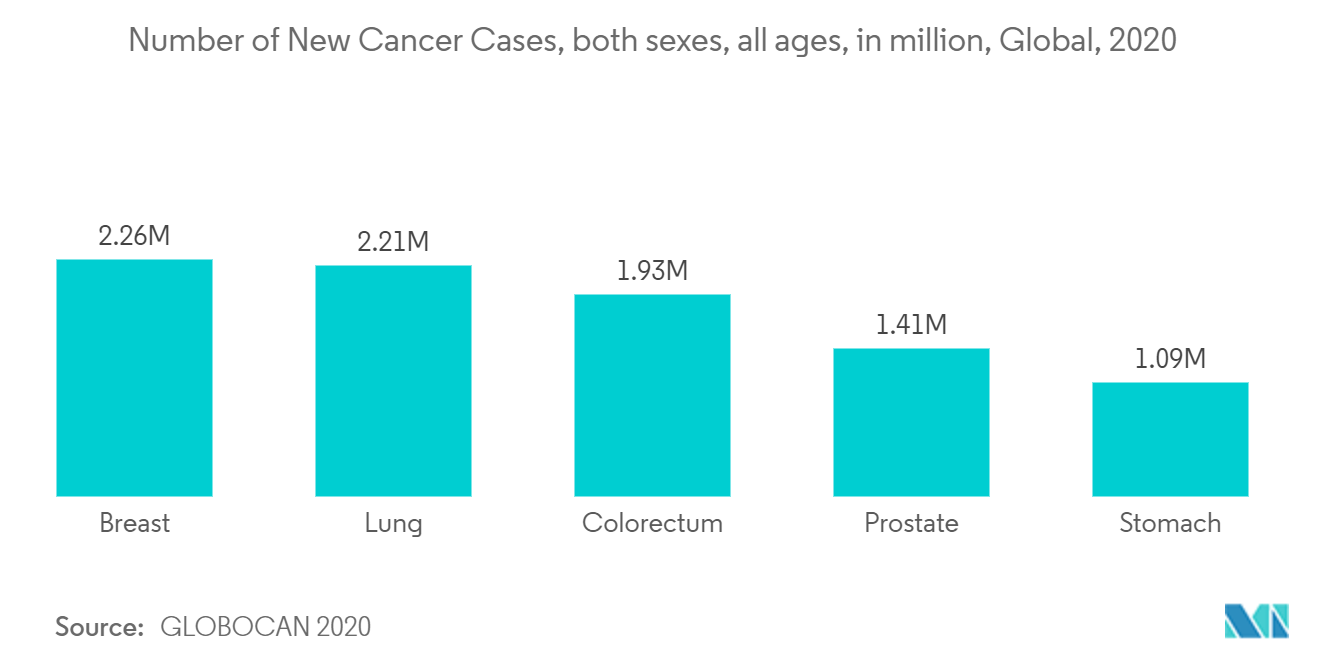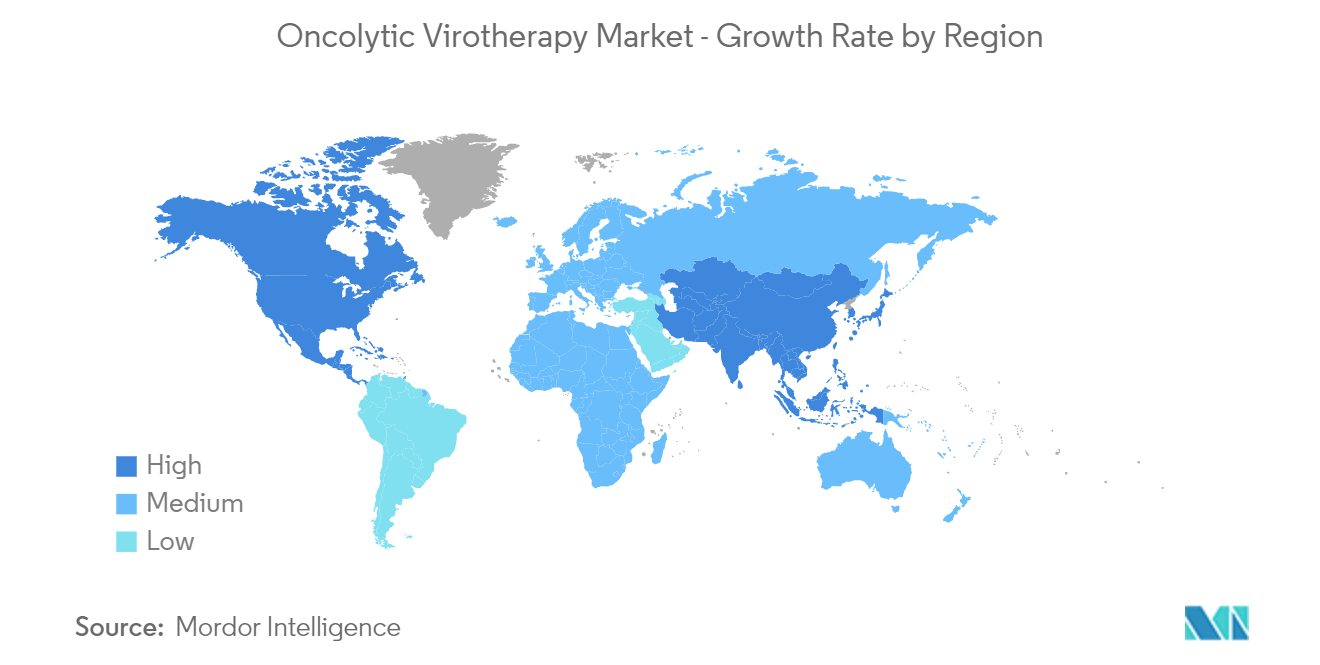Market Trends of Global Oncolytic Virotherapy Industry
This section covers the major market trends shaping the Oncolytic Virotherapy Market according to our research experts:
Adenovirus-based Oncolytic Viruses Segment Dominates the Market
The Adenovirus-based Oncolytic Viruses segment held a high market share and is expected to attain a significant market share in the forecast period. The growing usage demand due to their high accuracy in delivering the gene to the specific region has driven the market share in this segment.
Adenoviruses are double-stranded DNA viruses. They are considered excellent vectors, due to their capability to induce both innate and adaptive immune responses, that are used to deliver target antigens to the hosts.
The need for oncolytic virotherapy as a primary treatment is growing in response to the increased prevalence of cancer. Several oncolytic viruses are being studied as a potential treatment for cancer in clinical trials. According to American Cancer Society, 2021, breast and prostate cancer held the highest share, registering 281,550 and 248,530 cases respectively.
The companies are also engaging in collaborations and agreements to increase their market share. For instance, In August 2021, Calidi Biotherapeutics entered into an exclusive license agreement, with the City of Hope and the University of Chicago for novel oncolytic virotherapy technology. The agreement grants Calidi commercial exclusivity in using an oncolytic adenovirus (CRAd-pk-S-7) in combination with a clinical-grade allogeneic neural stem cell line.
In January 2021, Theolytics a European start-up is focusing on creating change in the oncolytic viral therapy field, by using its phenotypic screening platform to discover and develop highly efficacious, targeted candidates, suitable for intravenous delivery and optimized for a chosen cancer patient population.
The high demand for effective therapeutics for the management of cancers, the presence of fast track approval process, and the prospects of novel drugs to turn into blockbuster products are primary reasons responsible for the significant R&D investments in the field of oncolytic virus therapeutics, which, in turn, is driving the market's growth.

North America Dominates the Market and is Expected to do the Same in the Forecast Period
North America is expected to hold a high market share during the forecast period owing to the increasing patient population compared to other countries. The rising incidences of cancer in the United States are boosting the market growth. As per the 2021 report by the American Cancer Society, there were an estimated 1.9 million new cancer cases diagnosed and 608,570 cancer deaths in the United States in 2021. The other factors that are attributed to the growth of the market are increasing awareness about different cancer treatments, the availability of advanced immune-oncology drugs in the region, and the growing healthcare spending in countries such as the United States. According to the statistics published by the Centers for Medicare and Medicaid Services (CMS), U.S. health care spending grew 9.7 percent in 2020, reaching USD 4.1 trillion or USD 12,530 per person. As a share of the nation's Gross Domestic Product, health spending accounted for 19.7 percent.
Companies are also engaging in collaborations and agreements to increase their market share. In December 2021, Bionaut Labs announced a strategic collaboration with Candel Therapeutics, Inc investigating the use of Bionaut's remote-controlled microscale robots for precision delivery of Candel's oncolytic viral immunotherapy agents to specific brain tumors. In this collaboration, Bionaut Labs will apply its micro-robotic technology to deliver Candel's oncolytic viruses directly to brain tumors in a minimally invasive manner.
Furthermore, rising investments in the developing therapies of advanced technology, rising number of clinical trials and favorable government reimbursement policies, an increasing number of cancer patients, and the presence of the key players are driving the growth of the market in the forecast period. In addition, rising healthcare expenditure, as a share of GDP in the United States has become one of the major factors which are expected to drive the market growth in the forecast period.


